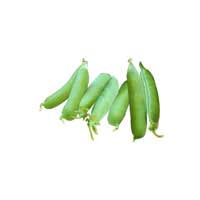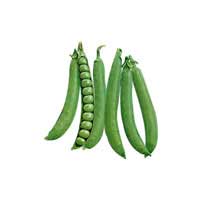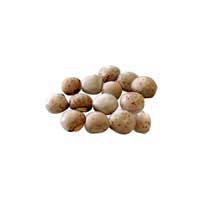 Full List of Fruits
Full List of Fruits  Pigeon pea
Pigeon peaPigeon pea
Scientific name - Cajanus cajan
The pigeon pea is a perennial legume, reigns from the family Fabaceae and their scientific name is Cajanus cajan, It was first domesticated in South Asia around 3,500 years ago and their seeds are food grains in Asia, Africa and Latin America . The cultivation takes place as a single crop or with cereals like sorghum(Sorghum bicolor), pearl millet(Pennisetium glaucum), maize(Zeamays) or combined to legumes like peanuts(Arachis hypogaea) in 25 tropical and subtropical countries and more ,The seed pods looks flat, straight, sickle shaped with a length of 5-9 cm(2-3.5 in). Every pod contains 2 to 9 seeds with a mixture of colors such as white, cream, yellow, purple and black or combined with any of these individual colors. The maximum height of pigeon pea is 0.5-4.0 m(1.6-13.1ft), they are grown annually and harvested at the end of one season.
![]() Nutritional Value of Pigeon pea
Nutritional Value of Pigeon pea
| Energy | 569 kJ (136 kcal) |
| Carbohydrates | 23.88 g |
| Sugars | 3 g |
| Dietary fiber | 5.1 g |
| Fat | 1.64 g |
| Protein | 7.2 g |
| Vitamins | |
| Thiamine (B1) | (35%) 0.4 mg |
| Riboflavin (B2) | (14%) 0.17 mg |
| Niacin (B3) | (15%) 2.2 mg |
| Pantothenic acid (B5) | (14%) 0.68 mg |
| Vitamin B6 | (5%) 0.068 mg |
| Folate (B9) | (43%) 173 µg |
| Choline | (9%) 45.8 mg |
| Vitamin C | (47%) 39 mg |
| Vitamin E | (3%) 0.39 mg |
| Vitamin K | (23%) 24 µg |
| Trace metals | |
| Calcium | (4%) 42 mg |
| Iron | (12%) 1.6 mg |
| Magnesium | (19%) 68 mg |
| Manganese | (27%) 0.574 mg |
| Phosphorus | (18%) 127 mg |
| Potassium | (12%) 552 mg |
| Sodium | (0%) 5 mg |
| Zinc | (11%) 1.04 mg |
Pigeon pea are chief legumes which are cultivated in semi-arid tropical regions, their immature seeds are either taken fresh as a vegetable otherwise they are left to become mature and then dried to be consumed as a pulse. Their seed pods are consumable and consumed as a vegetable. Their seed husks and leaves are utilized as feed for animals.
 The Pigeon pea has many medical applications in it, characteristics of the plant is that they are vulnerary, diuretic, astringent, antidote, sedative, laxative, expectorant, and verimifuge properties
The Pigeon pea has many medical applications in it, characteristics of the plant is that they are vulnerary, diuretic, astringent, antidote, sedative, laxative, expectorant, and verimifuge properties
 It is used to cure health based problems such as bronchitis, pneumonia, cough, respiratory infections, colds, chest problems and sore throat.
It is used to cure health based problems such as bronchitis, pneumonia, cough, respiratory infections, colds, chest problems and sore throat.
 Also aids in solving skin problems such as Urticaria, general irritations and also Dermatosis.
Also aids in solving skin problems such as Urticaria, general irritations and also Dermatosis.
 It also heals other health complications such as blood disorders, anemia, diarrhea, dysentery, jaundice, fevers, colic, leprosy, convulsions, flu, diabetes, hepatitis, yellow fever, strokes, urinary infections and menstrual disorders too.
It also heals other health complications such as blood disorders, anemia, diarrhea, dysentery, jaundice, fevers, colic, leprosy, convulsions, flu, diabetes, hepatitis, yellow fever, strokes, urinary infections and menstrual disorders too.
 Furthermore it helps in curing heal earache, tumors, abdominal pain, ulcers, wounds, sores, enteritis, inflammation and various other ailments.
Furthermore it helps in curing heal earache, tumors, abdominal pain, ulcers, wounds, sores, enteritis, inflammation and various other ailments.
 There are no common side effects on the consumption of pigeon peas but under any exceptional case if someone is allergic to beans ,seeds or their nutritional contents it is advisable to consult a physician before consumption.
There are no common side effects on the consumption of pigeon peas but under any exceptional case if someone is allergic to beans ,seeds or their nutritional contents it is advisable to consult a physician before consumption.
 It must not be consumed too much which may end resulting in side effects.
It must not be consumed too much which may end resulting in side effects.
Since Pigeon peas is of perennial variety their crops persist for three to five years, but the seeds produce the output in the following two years itself, they are commonly cultivated in tropical and semitropical regions now and in the earlier days too, the yield produced annually is fit for the production of seeds.
Crop cultivation is done in marginal lands only and cultivation is done by farmers with less provisions of recourses, traditionally the duration is 5-11 months which is quite long, there are also short-duration pigeon peas with just 3-4 months which is more apt for multiple cropping, From the time down the general stimulants for crops such as fertilizers, weeding, irrigation and pesticides are lesser thus their outputs reduce too (average=700kg/ha). The crop is on more demand nowadays and very profitable too so it’s efficiently cultivated and managed.
The desirable temperatures for these crops to grow well ranges from 18-38 degrees (64.4-100.4 F)
And posseses the ability to come out well in many soils from sandy to clay soil, Soil must be able to hold up good amount of water and nicely drained is considered to be a supreme one , The plant can resist a pH range of 4.5-8.5 but minimally needs a range of 5 and 7. They can resist the draught conditions and can less irrigation. Pigeon pea undergoes propagation from seed and must be cultivated at depth of 2.5-10 cm with a distance of 30-50 cm (12-20 in) between each of the plant and 150 cm (60 in) in the middle of rows.
The harvesting period for the crops lies around the months of December and January in India and in Africa it lies between June and July. The flowering season begins in the mid time of 56-210 days when the seeds have been sown. The maturity period of the plant lies within 95-256 days.



















